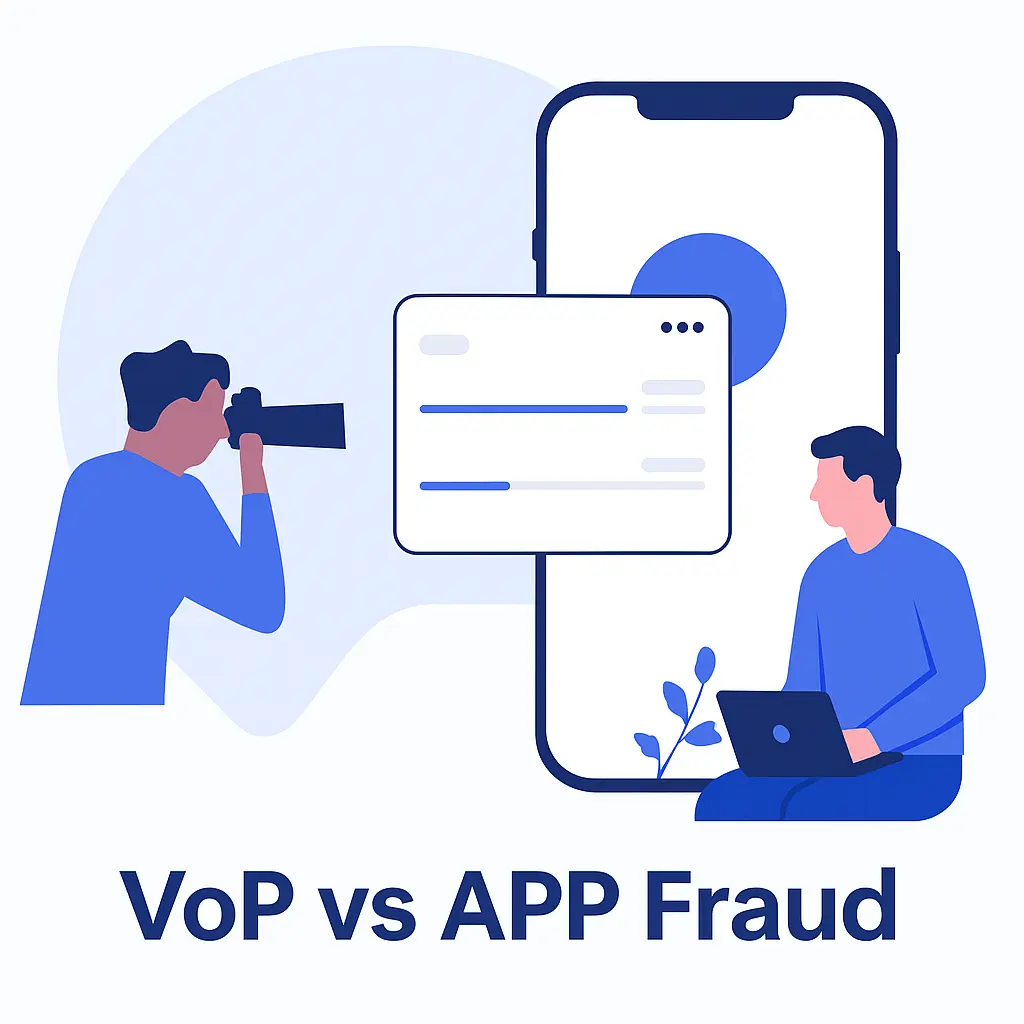VoP vs APP Fraud — What Really Happens in Real-Time Scenarios

APP Fraud: Fast, Targeted — and Brutal
APP fraud doesn’t sneak in through the backdoor. It walks right through the front — invited. That’s what makes it so dangerous. Your finance team gets an urgent request from what looks like a known contact. It sounds legitimate. Looks legitimate. They act. And the money is gone.
No hacks. No malware. Just a convincing request and a fast payment system — like SEPA Instant — that settles the transfer in under 10 seconds. No time to stop. No way to reverse.
So the question is: how do you protect a payment you can’t take back?
What VoP Actually Does — and Why It Matters
Verification of Payee (VoP) checks if the account name matches the IBAN. That’s it. A name check. But this simple step flips the script.
VoP inserts a real-time validation moment right before the money leaves the account. If the names don’t match? You get a warning, or the transaction is blocked. That’s not just helpful — that’s critical.
And as of the new EU Instant Payments Regulation, VoP isn’t a “nice-to-have” anymore. It’s mandatory:
- For 20 EU countries: deadline October 2025
- For the rest of SEPA: July 2027
Without VoP: A Common (and Costly) Scenario
Picture this:
- You receive an email from a trusted supplier. It looks right.
- They’ve “changed bank accounts” — here are the new details.
- Your AP team updates the record and sends €45,000 via SEPA Instant.
- Ten seconds later, the money lands in a mule account and vanishes.
No error. No fraud alert. No recourse.
That’s APP fraud — and it’s spreading fast. It’s not about breaking into your systems. It’s about hijacking trust.
With VoP: That Same Story Ends Differently
Now run that scenario again — but this time, VoP is active:
- The new IBAN is entered.
- The VoP service checks the account name in real time.
- A mismatch is flagged.
- The system alerts the user — or blocks the transfer entirely.
That tiny moment of friction? It just saved your company tens of thousands of euros.
It’s Not Just a Name Check. It’s a Trust Layer.
VoP does more than reduce fraud. It signals to your customers, auditors, and regulators that you take security seriously — and act accordingly.
In a landscape where APP scams now include deepfake voices, AI-generated emails, and social engineering at scale, name validation is the frontline defense. Not a checkbox — a barrier.
Who Must Comply (and When)
Let’s be clear:
- If you’re a Payment Service Provider offering SEPA Instant, VoP isn’t optional.
- Your compliance deadline depends on your location:
- October 2025 for the first 20 EU countries
- July 2027 for the rest of SEPA
Non-compliance means more than risk. It means regulatory exposure, reputational fallout, and operational liability.
VoP in the Real World: What to Expect
VoP isn’t plug-and-play. It shapes how your systems — and your teams — operate:
- Onboarding: Legal entity names need to be precise. No shortcuts.
- Retry logic: What happens when the name doesn’t match? Define it.
- UX: The check must feel intuitive, not intrusive.
- Supplier workflows: B2B fraud often hides in routine. VoP brings visibility.
The earlier you plan, the smoother your rollout. Trying to patch this later is expensive — and risky.
VoP Isn’t Everything — But It’s Where You Start
Will VoP stop all fraud? No. But it will stop the easiest fraud — the kind that doesn’t need tech, just timing and persuasion.
VoP gives your users a second of pause. A prompt. A final “are you sure?”
And that’s often the difference between routine and regret.
VoP helps you:
- Avoid costly payouts to fraudsters
- Stay on the right side of EU regulation
- Build trust where it matters most
In a world of instant, irreversible payments, VoP isn’t a feature.
It’s a safeguard.
Ready to protect every payment? Let’s talk.